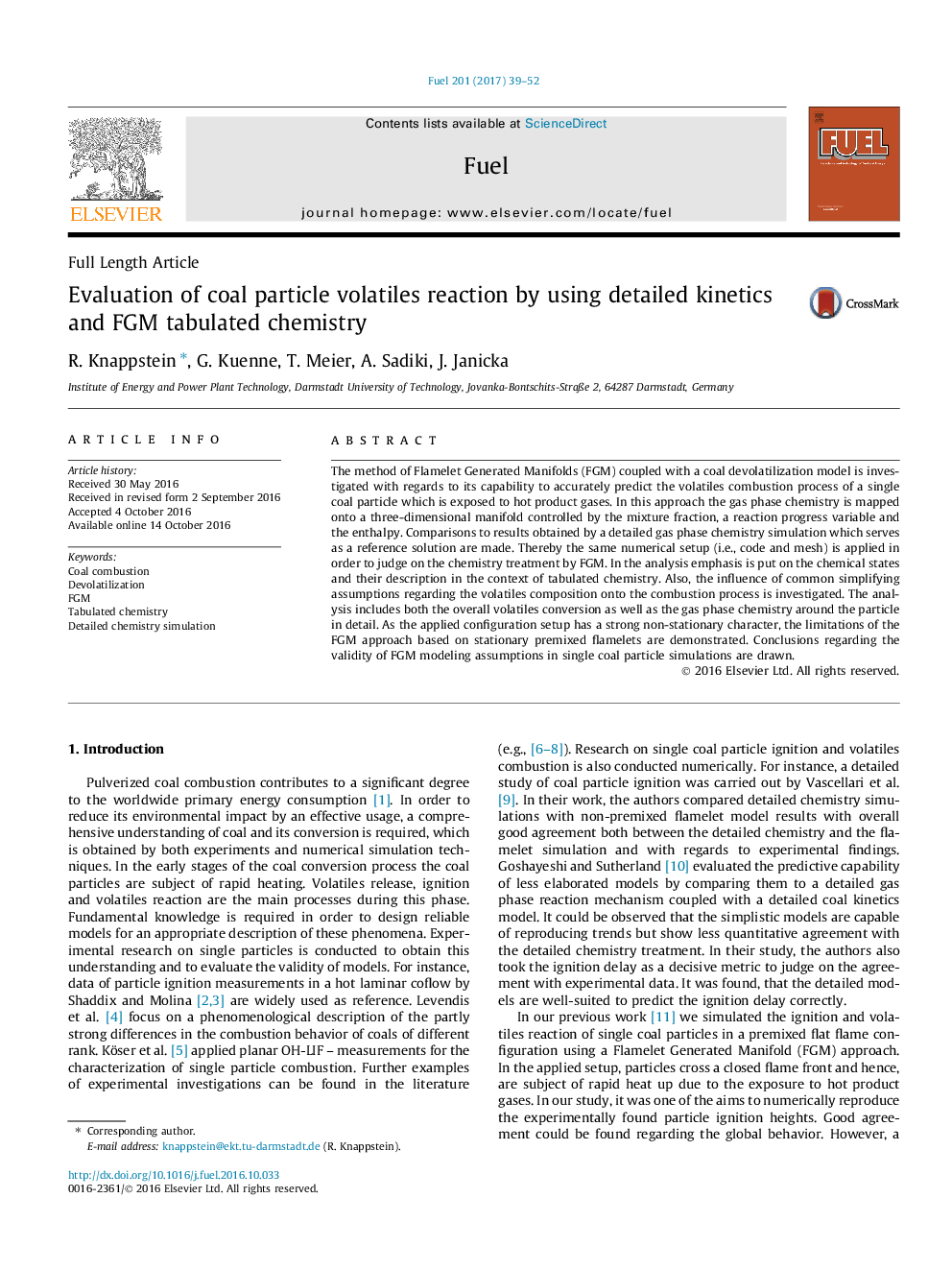| Article ID | Journal | Published Year | Pages | File Type |
|---|---|---|---|---|
| 6473649 | Fuel | 2017 | 14 Pages |
The method of Flamelet Generated Manifolds (FGM) coupled with a coal devolatilization model is investigated with regards to its capability to accurately predict the volatiles combustion process of a single coal particle which is exposed to hot product gases. In this approach the gas phase chemistry is mapped onto a three-dimensional manifold controlled by the mixture fraction, a reaction progress variable and the enthalpy. Comparisons to results obtained by a detailed gas phase chemistry simulation which serves as a reference solution are made. Thereby the same numerical setup (i.e., code and mesh) is applied in order to judge on the chemistry treatment by FGM. In the analysis emphasis is put on the chemical states and their description in the context of tabulated chemistry. Also, the influence of common simplifying assumptions regarding the volatiles composition onto the combustion process is investigated. The analysis includes both the overall volatiles conversion as well as the gas phase chemistry around the particle in detail. As the applied configuration setup has a strong non-stationary character, the limitations of the FGM approach based on stationary premixed flamelets are demonstrated. Conclusions regarding the validity of FGM modeling assumptions in single coal particle simulations are drawn.
